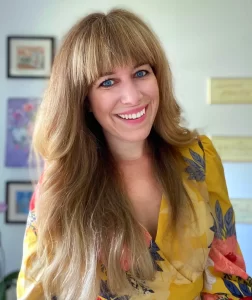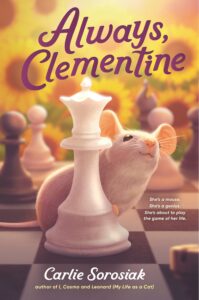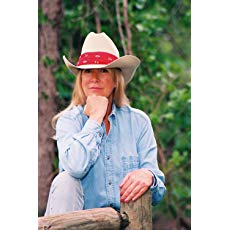We are on the cusp of Thanksgiving and the winter holidays.
I wish you all happiness, love, and cups running over with gratitude and blessings.
Today I have an interview with middle-grade author Carlie Sorosiak.

I recently read her latest novel, Always, Clementine.

She tells the story of a lab mouse with such heart and humor, it was easy to fall in love.
I have to admit that the end had me in tears…unusual for me.
So, first of all, Carlie, a big thank you for this interview.
I love to get inside the head of an author and learn a bit more about their process and their connection to their stories.
Gail: Set the scene for me. Where are you right now?
Carlie Sorosiak: I’m at my desk (handmade by a woodworker from my grandmother’s hometown), and my dog is snoozing under my feet.
G: Sounds perfectly cozy! I loved the premise of Always, Clementine.
The idea of a lab mouse out in the big world for the first time is heartbreaking.
But the way Clementine makes the world a better place through her escape is utterly charming.
In your acknowledgements, you mentioned your rescue rabbit, Strawberry.
It sounds like a sad story with a happy ending, thanks to you.
Did you save her from a lab like Clementine’s?
CS: Thank you for bringing up Strawberry. She was rescued from a research lab in North Carolina. My teacher brought Strawberry into my elementary school classroom and asked if anyone could take her home. My mom said “us!”
Strawberry lived in the comfort of our kitchen and in a hutch that my dad built in the backyard. My family didn’t have a lot of money at the time, and I remember that my mom dug into some savings to have our vet cut the research tag from Strawberry’s ear.
G: Thank goodness for good people like you and your family and like Felix (the scientist who frees Clementine) in your story. Is Felix based on a real person? And what about Gus (the boy who finds Clementine and gives her a home)? What a sweetheart.
CS: Felix isn’t necessarily based on anyone in particular, but now that I think about it, he has the spirit of my teacher, who rescued Strawberry. And I love Gus! Gus has my anxieties. He’s a piece of who I was as a kid.
G: As we talked about earlier, while reading Always, Clementine, I kept hoping it wouldn’t turn out like Flowers for Algernon. You said you’d never read that book, but people have told you Always, Clementine, reminded them of Flowers. Do you think you might give it a try now?
CS: I definitely will, sometime in the future! That and The Rats of NIMH. I’m told that I would appreciate both. Unfortunately, my TBR pile is about a mile high. I’m into poetry at the moment.
G: I get it. Those TBR piles never seem to get shorter. Chess figures prominently in Always, Clementine. It is an apt metaphor for fighting for one’s life with a support team. Did you have the idea of using chess from the beginning or did it occur to you as you were writing early drafts? Did you have to take a crash course? You must be as brilliant as Clementine!
CS: I added chess after the first draft, as I was watching The Queen’s Gambit on Netflix. That show reinvigorated my dormant love of chess. I was the chess-team captain in elementary school! I thought that a brilliant mouse could use a brilliant game.
G: Well, it was the perfect addition. I appreciated that Always, Clementine was not at all preachy. It didn’t need to be! The story just made my heart ooze with compassion. Thank you for your notes at the end of the book about what kids can do. Has this subject been important to you all your life? (I love that your dad stops his car for turtles!)
CS: Yes, it has. I come from a family of animal rescuers. I can’t imagine living life another way.
G: So has Always, Clementine been bubbling in your head for many years?
CS: I’ve had Clementine (in one form or another) in my head for about five years. Eventually, I knew I had to put “the mouse book” to paper, but it took me a long time to figure out what shape it would take.
G: I’m so glad you did! Can you share news about a future project?
CS: It may or may not involve a fox.
G: I will look forward to it, whenever it appears. What are some themes that are near and dear to your heart that you try to weave throughout your stories?
CS: Animals have interiorities that are more complex than we think. People can be good.
G: For those of us who are writers, what’s your strategy: Plotter or Pantser?
CS: Somewhere in between! I use Save the Cat for story structure. Which is quite funny, considering that my second middle-grade book was about . . . saving a cat.
G: That would be Leonard, My Life as a Cat. What writer or other creative person inspires you?
CS: I am continuously inspired by Kate DiCamillo.
G: Yes, she’s worthy! Any advice for parents about how best to nurture their child’s creative side…as well as their hero side?
CS: Encourage them to read as widely as possible!
G: That’s a beautiful lesson for everyone. Thank you so much, Carlie, for your time and for continuing to write stories that show readers what it means to be human via the world of animals.
To learn more about Carlie Sorosiak visit www.carliesorosiak.com.
In addition to middle grade, Carlie writes young adult and picture books.
To read my review of Always, Clementine at gaillfontana.com.





One Comment
Comments are closed.